Table of Contents
As you explore the rich and fascinating culture of Japan, there is no better way to fully immerse yourself than by attending one of the sumo tournaments. Sumo wrestling is more than just a sport in Japan – it is a sacred tradition that dates back centuries and holds a significant place in the country’s history and culture. As a visitor to Japan, experiencing a sumo tournament firsthand provides a rare opportunity to witness this ancient ritual up close. And also gain a deeper understanding of the country’s customs and traditions. The excitement and energy of a sumo tournament is an unforgettable experience that is sure to leave a lasting impression and one that you should visit in Japan.
In this comprehensive guide, we will take you on a journey through the world of sumo wrestling, from its fascinating history and cultural significance to the practicalities of attending a tournament and getting the most out of the experience.
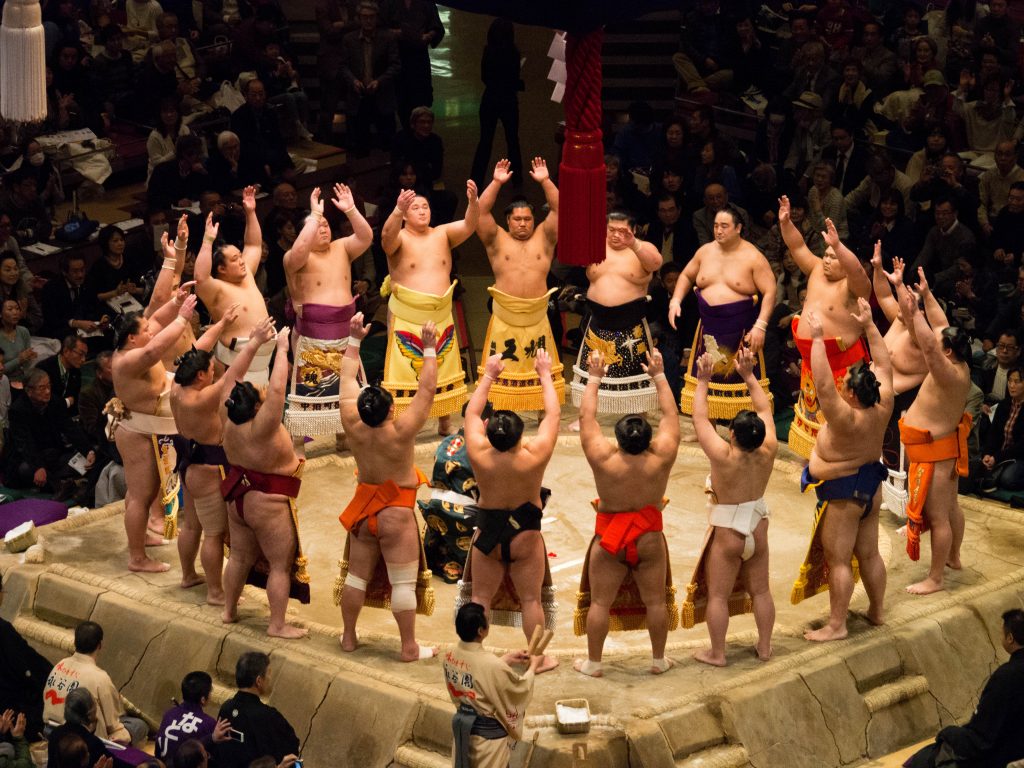
History and Culture of Sumo Tournaments in Japan
Sumo wrestling is a sport that originated in Japan over 1,500 years ago and has since evolved into a highly respected cultural tradition. The word “sumo” comes from the Japanese characters “su” meaning to struggle or fight, and “mo” meaning to grab or hold. The sport was originally performed as a form of entertainment at religious festivals and ceremonies, and it was not until the Edo period (1603-1868) that it became a professional sport.
Today, sumo wrestling is widely popular as Japan’s national sport and holds significant cultural importance in the country. It is full of tradition and ritual, with every aspect of the sport. From the wrestler’s clothing to the way the matches are conducted, having a special meaning and purpose. Sumo wrestling is not just a sport, but also a way of life for those who practice it, with wrestlers adhering to strict training regimens and following a set of rules and customs that have been passed down for generations.

Different types of sumo tournaments
The cultural significance of sumo wrestling in Japan one can see in the way it is celebrated and revered throughout the country. Each year, six major sumo tournaments, or basho, attract thousands of spectators from all over the world. These tournaments are not just sporting events, but also cultural celebrations, with traditional music and dance performances, and sumo-themed merchandise and food stalls adding to the festive atmosphere.
Understanding the culture and traditions of sumo tournaments is an essential part of fully appreciating this ancient Japanese tradition. From the way the wrestlers dress and enter the ring, every aspect of the sumo has symbolism and meaning. For example, the wrestler’s clothing, called a mawashi, is not just a uniform, but also a symbol of their dedication and discipline. Likewise, the rituals and ceremonies performed before and after each match are not just formalities, but also a way to honor the wrestlers and pay respect to the sport’s history and traditions.
Sumo wrestling is an integral part of Japanese culture and history, and attending a sumo tournament is a unique and fascinating way to immerse oneself in this ancient tradition. The cultural significance of sumo wrestling in Japan cannot be overstated, and understanding its customs and traditions is essential to fully appreciate this unique sport.

Sumo Tournaments Schedule
If you’re planning to attend a sumo tournament in Japan, it’s important to know the schedule in advance. There are six major sumo tournaments, or basho, held throughout the year, with each tournament lasting 15 days. The first tournament of the year takes place in January, followed by tournaments in March, May, July, September, and November. You can find these tournaments in different cities throughout Japan, with each tournament taking place in a different location.
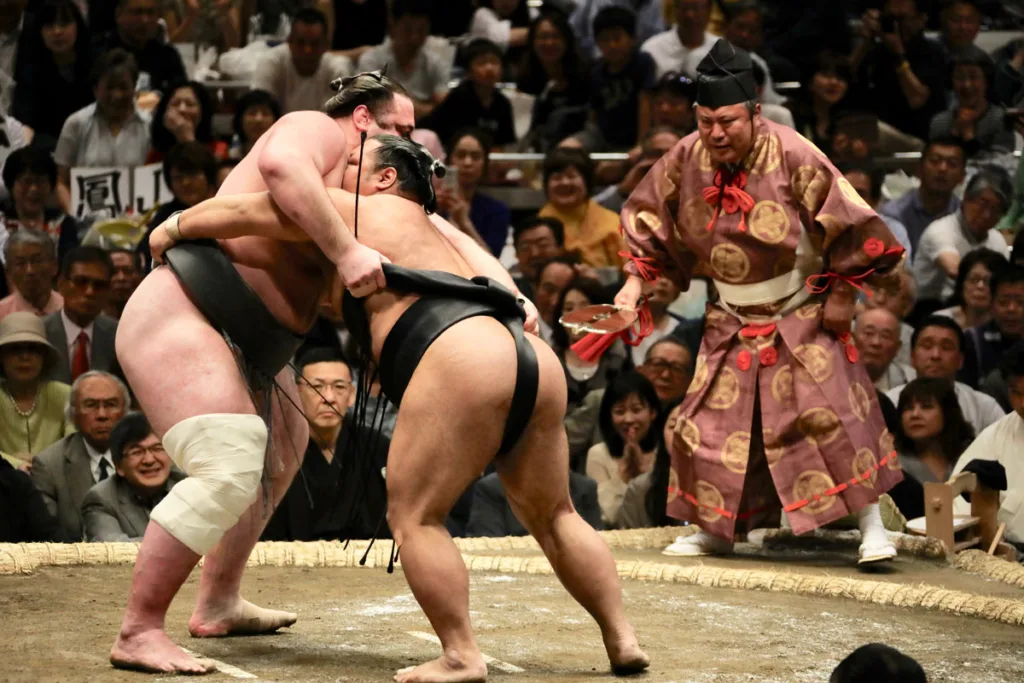
Sumo tournaments format and rules
During the first week of the tournament, the wrestlers are divided into two groups, with each group competing on alternate days. The top-ranked wrestlers, known as yokozuna, and the lower-ranked wrestlers, known as maegashira, will compete on different days. As the tournament progresses, the wrestlers with the best records from each group will face off against each other, with the tournament culminating in the final day, known as senshuraku.
On the final day of the tournament, the two wrestlers with the best records will face each other in the championship match. This is an incredibly exciting event, with the entire arena erupting in cheers as the two wrestlers enter the ring. The match itself lasts only a few seconds, but it is an incredible display of strength, technique, and skill.
Attending a sumo tournament is an unforgettable experience, and there is a lot to see and do throughout the day. In addition to the sumo matches themselves, there are also traditional music and dance performances, as well as sumo-themed merchandise and food stalls. It’s important to arrive early to secure your seat, as the tournaments are incredibly popular and the best seats sell out quickly.
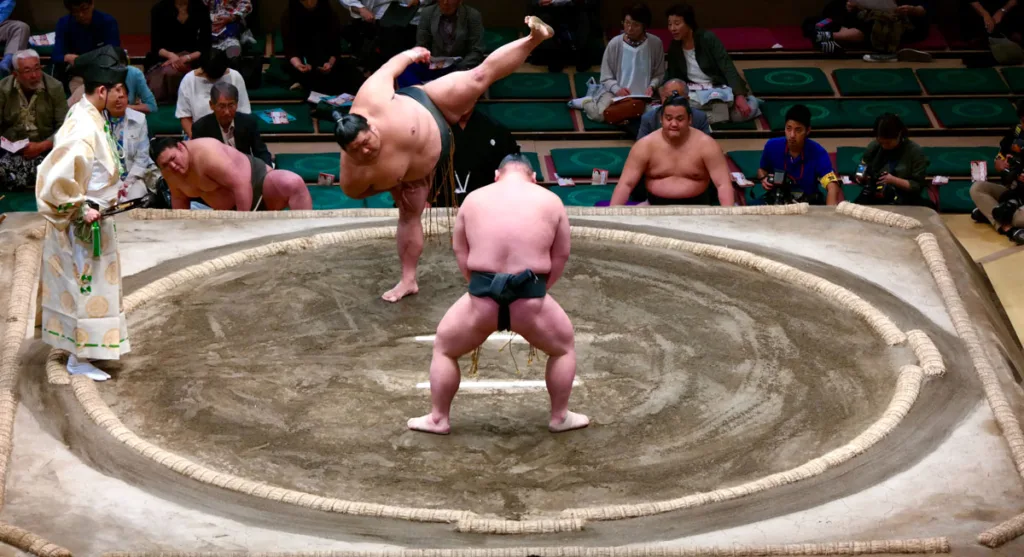
Attending Sumo Tournaments in Japan
First things first, let’s talk about how to purchase tickets for a sumo tournament. You can purchase tickets in advance through official sumo websites or at convenience stores in Japan. If you’re planning to purchase tickets in advance, it’s important to do so as early as possible, as the best seats tend to sell out quickly.
Once you’ve got your tickets, it’s time to head to the tournament venue. Sumo tournaments are in large arenas throughout Japan, with the biggest tournaments held in Tokyo’s Ryogoku Kokugikan. When you arrive at the venue, be sure to grab a program, which will give you information on the wrestlers and the schedule for the day.
As for navigating the tournament venue, it’s important to arrive early to secure your seat. The most expensive seats are always closest to the ring. If you’re looking to save money, consider purchasing a ticket for the upper level, which still offers a great view of the action.
Once the tournament begins, get ready for an unforgettable experience. The wrestlers will enter the ring to thunderous applause, and the matches themselves are incredibly exciting to watch. Keep an eye out for the wrestlers’ unique techniques and strategies, and cheer them on as they compete for victory. And don’t forget about the championship match on the final day, which is always a highlight of the tournament.

The Sumo Wrestlers
Firstly, let’s talk about the training regimen of these incredible athletes. Sumo wrestlers, known as rikishi in Japanese, undergo rigorous training to build up their strength and endurance. Their training includes everything from weight lifting and cardio to practicing their wrestling techniques in the ring. They also follow a strict diet, which typically includes large quantities of protein-rich foods like fish, meat, and tofu.
It’s important to note that sumo wrestlers are highly respected in Japan, not only for their athletic abilities but also for their dedication to the sport. They follow strict rules and rituals, such as performing ceremonial purification before entering the ring. In addition, they need to maintain a high level of sportsmanship and respect for their opponents.
As a spectator, it’s important to show the same level of respect to the wrestlers. Cheering and applauding are welcome, but it’s important to refrain from any disrespectful behavior, such as throwing objects into the ring or making derogatory comments. These athletes have dedicated their lives to the sport of sumo, and we should honor their hard work and dedication by being respectful spectators.
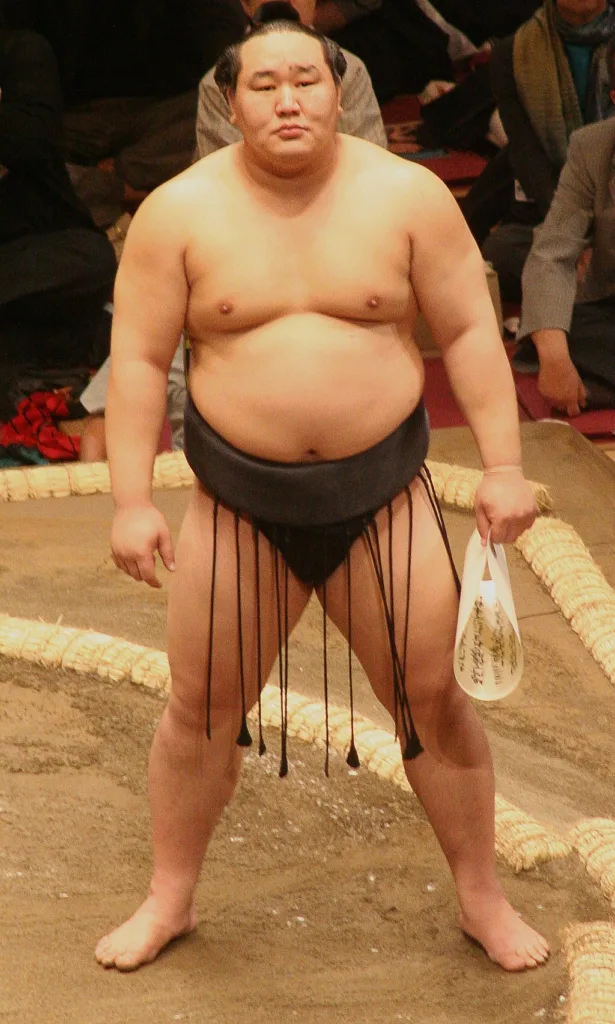
Experience the Thrill of Sumo Tournaments in Japan
Attending a sumo tournament in Japan is a truly unique and unforgettable experience that you one shouldn’t miss when in Japan. The combination of athleticism, tradition, and cultural significance make it a must-see for anyone visiting Japan. From the excitement of the matches to the rituals and traditions that surround the tournament, there is so much to take in and appreciate.
One of the best things about attending a sumo tournament is the atmosphere. The energy in the arena is palpable, with fans cheering and shouting in support of their favorite wrestlers. It’s a chance to witness firsthand the passion and enthusiasm that the Japanese have for this ancient sport.
Many tournaments offer traditional food and drink options, as well as souvenirs and other cultural attractions. It’s an opportunity to immerse yourself in Japanese culture and learn more about the traditions and rituals that surround Sumo.
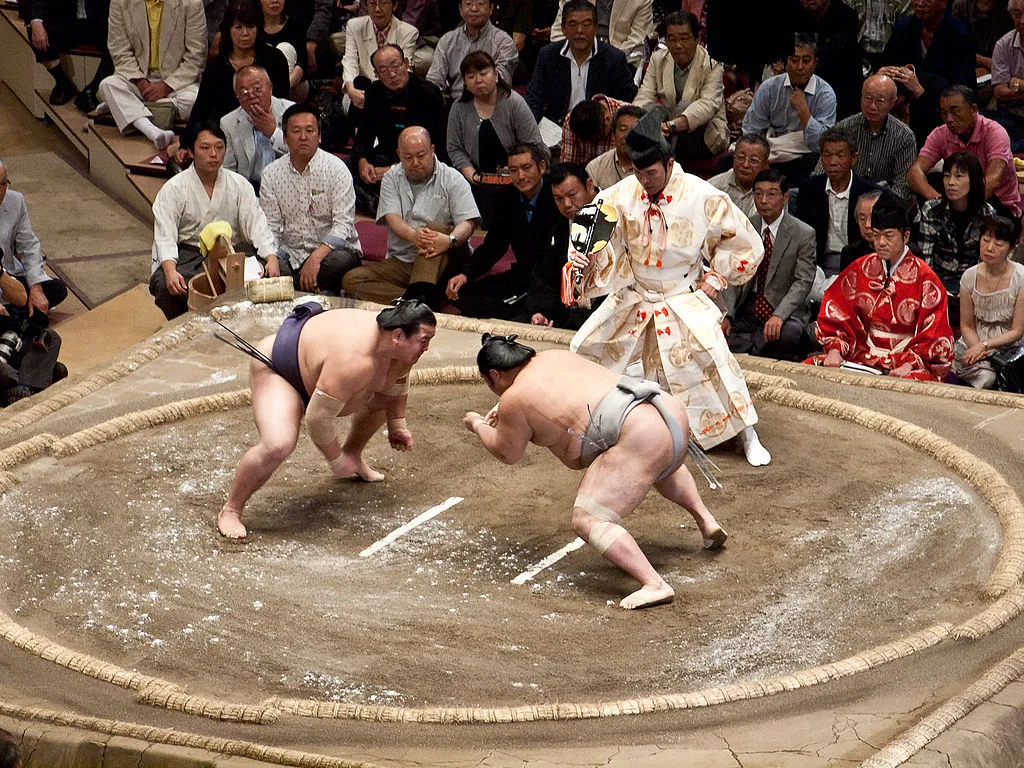
Book Your Tokyo Sumo Experience
The Tokyo Sumo Experience is a unique and immersive opportunity for visitors to witness the ancient and traditional sport of sumo wrestling up close. The experience takes place in Ryogoku, which is the heart of the sumo world in Tokyo. Visitors will have the chance to watch a live sumo demonstration, where professional sumo wrestlers showcase their skills and techniques in the ring. The experience also includes a traditional sumo lunch, where guests can try chanko nabe, a hearty stew that is a staple of the sumo wrestler’s diet. Throughout the experience, visitors can learn about the history and culture of sumo wrestling. And also gain a deeper appreciation for this fascinating and often misunderstood sport.
Visit Sumo Stable
Visiting a sumo stable is a fascinating way to immerse yourself in the world of sumo wrestling and gain a deeper understanding of its traditions and discipline. Sumo stables are the training grounds where wrestlers reside, train, and practice their skills. Some stables offer the unique opportunity for visitors to observe morning training sessions, allowing them to witness firsthand the intense and grueling training regimen that sumo wrestlers undergo. However, it’s important to note that access to sumo stables may be restricted, and prior permission or a guided tour may be required to ensure a respectful and non-intrusive visit. By visiting a sumo stable, you can witness the dedication, physicality, and cultural significance of sumo wrestling up close, making it a truly memorable experience for sumo enthusiasts and those interested in Japanese culture.
Top book recommendations to dive deep into Sumo
- “The Big Book of Sumo: History, Practice, Ritual, Combat” by Mina Hall – This book provides a comprehensive overview of the history, culture, and practice of sumo wrestling. It features detailed descriptions and illustrations of the techniques and rules of the sport.
- “The Way of Salt” is a book by Mark Ziegler that explores the world of sumo wrestling through the story of a young American sumo wrestler named Dan Kalbfleisch. The book follows Kalbfleisch as he trains and competes in Japan, and provides insights into the training, discipline, and culture of sumo wrestling. Along the way, readers learn about the history of sumo, the rituals and ceremonies involved in the sport, and the intense physical and mental demands placed on sumo wrestlers. “The Way of Salt” is a great read for anyone interested in sumo wrestling or Japanese culture.
- “Sumo: A Pocket Guide” by David Benjamin – This concise and informative guidebook provides an introduction to sumo wrestling, including its history, culture, and rules. It also includes tips for watching sumo tournaments in person.
- “Sumo: A Thinking Fan’s Guide to Japan’s National Sport” by David Benjamin and David Powers – This book offers a detailed analysis and commentary on the strategy and tactics of sumo wrestling. It includes profiles of top wrestlers and insights into the culture and history of the sport.
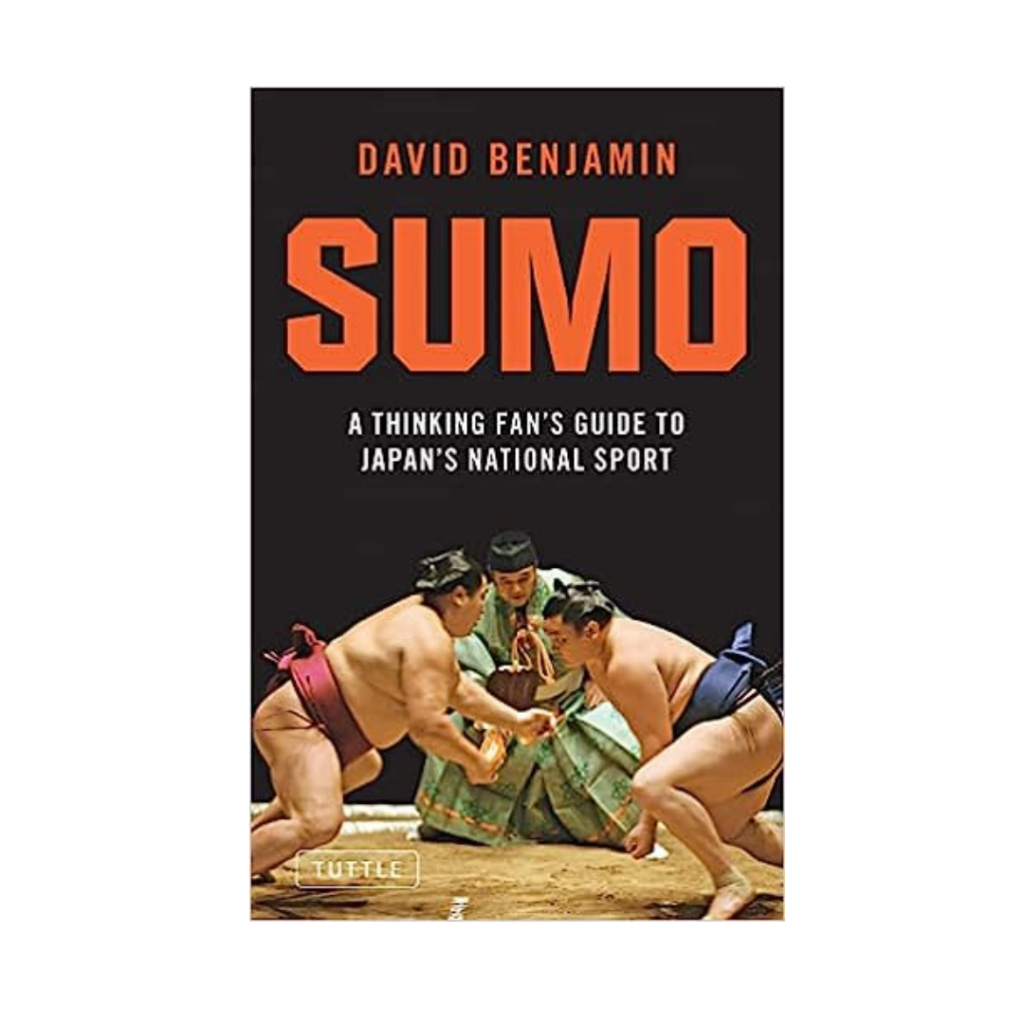
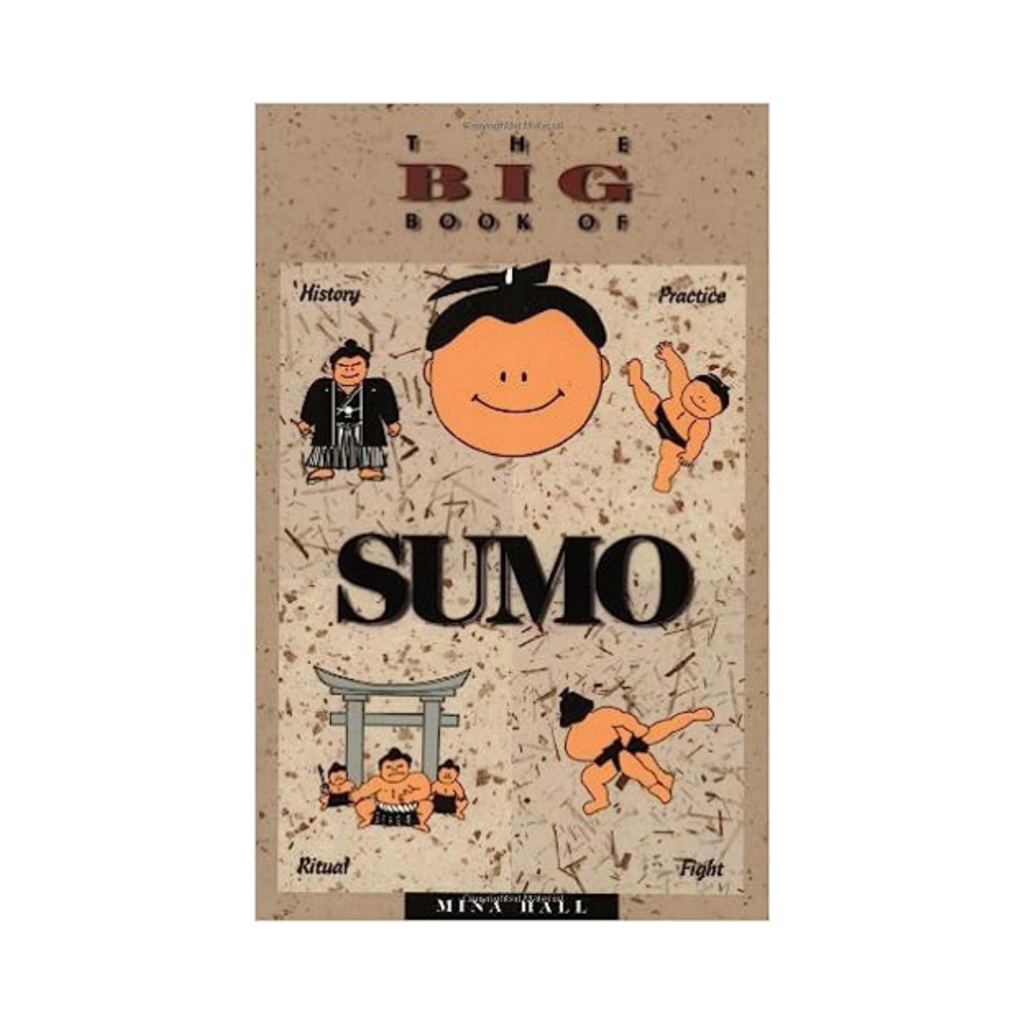
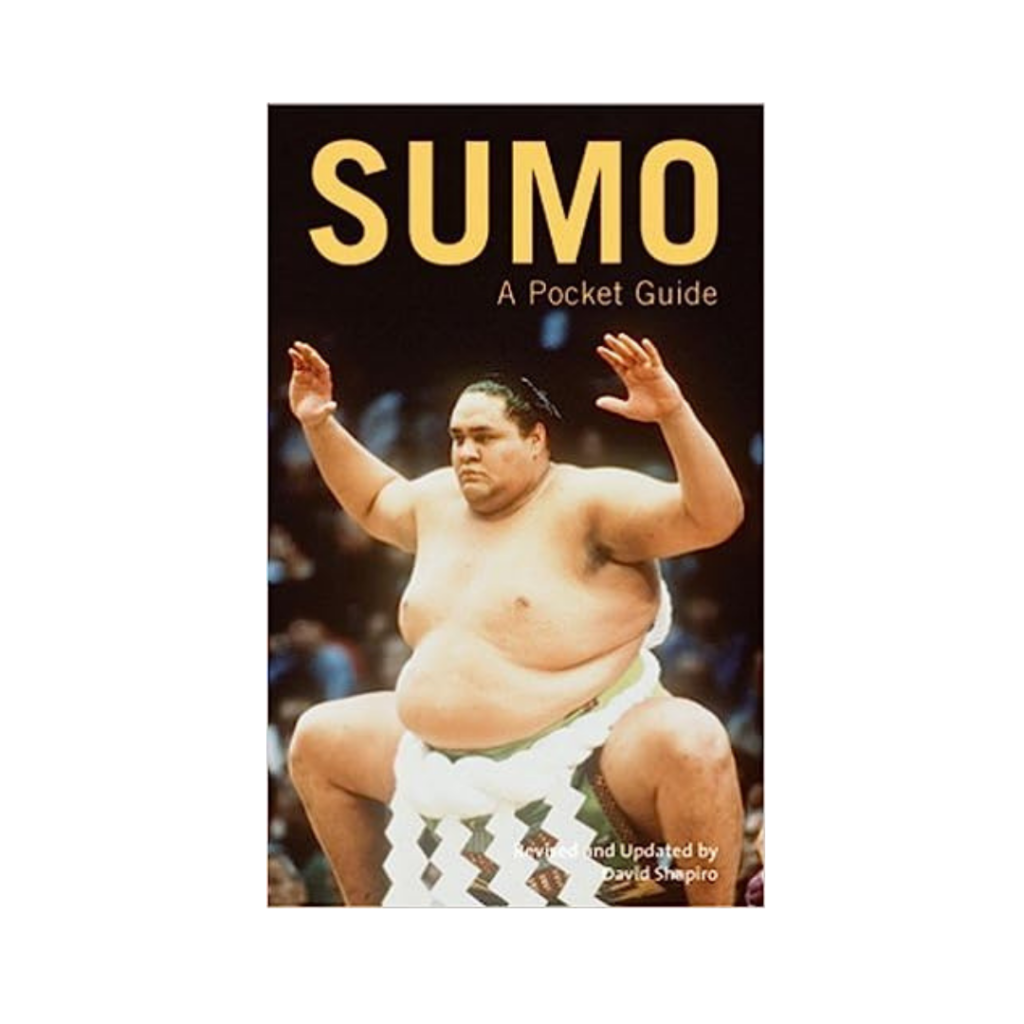
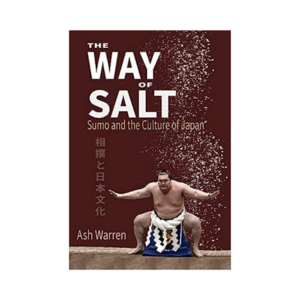
Witness the ancient and fascinating sport of sumo wrestling in its homeland
Attending a sumo tournament in Japan is a must-see cultural experience! With six tournaments held throughout the year, there are plenty of opportunities to witness this ancient tradition in action. From the excitement of the sumo matches to the traditional music and dance performances, there is something for everyone at a sumo tournament. So mark your calendar and get ready to experience the thrill of sumo wrestling in Japan! Whether you’re a sports fan or simply interested in Japanese culture, it’s a must-see for anyone visiting the country. So, if you’re planning a trip to Japan, be sure to add a sumo tournament to your itinerary.
